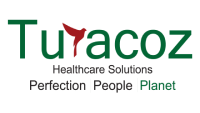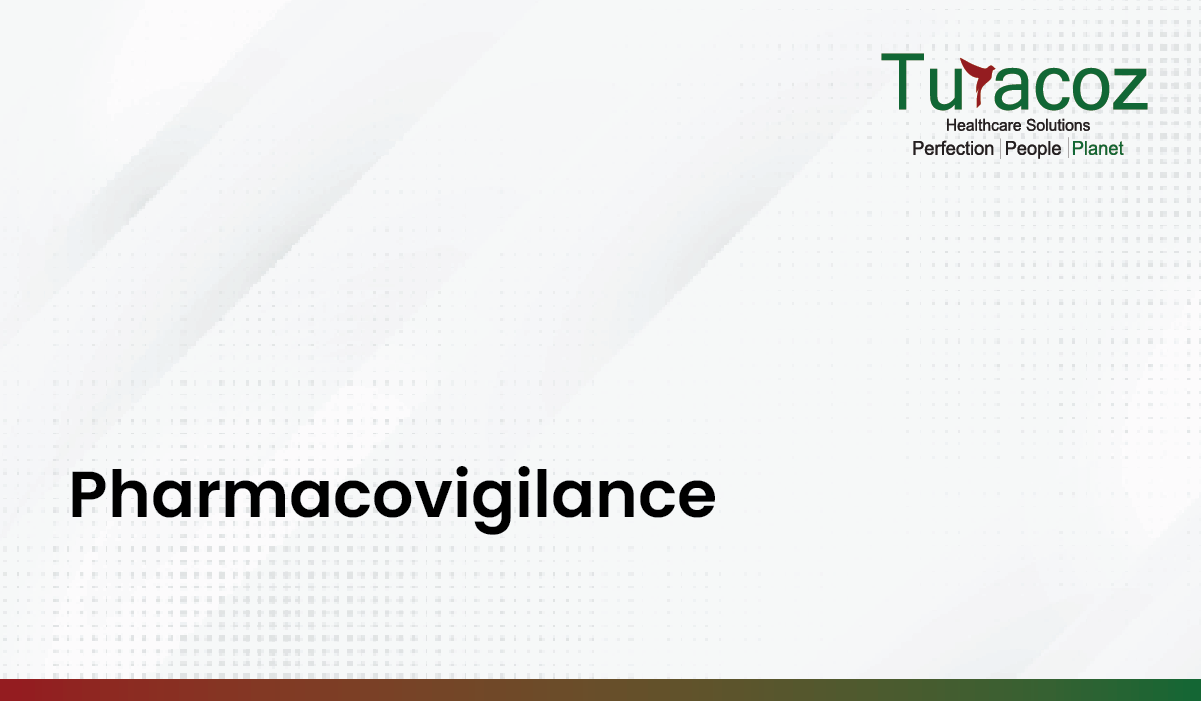The term ‘pharmacovigilance’ was coined in the mid 70’s by a group of French pharmacologists and toxicologists to describe the operations encouraging evaluation of the risks and side effects potentially associated with drug treatment.(1, 2)The World Health Organization (WHO) defines pharmacovigilance as, ‘the science and activities relating to the detection, assessment, understanding and prevention of adverse effects or any other drug-related problem’(3) It incorporates the processes involved in monitoring and evaluating adverse drug reactions viz., collecting, monitoring, researching, assessing and evaluating information from healthcare providers and patients on the adverse effects of medications, biological products, blood products, herbals, vaccines, medical device, traditional and complementary medicines, with an aim to identifynew information about hazards and figuring out ways to safeguard patients from any potential harm.(2, 4)
Pharmacovigilance aims to:
-
- Improve patient care and safety in relation to the use of medicines
- Improve public health and safety in relation to the use of medicines;
- Detect problems related to the use of medicines and communicate the findings in a timely manner.
- Contribute to the assessment of benefit, harm, effectiveness and risk of medicines, leading to the prevention of harm and maximization of benefit.
- Encourage the safe, rational and more effective use of medicines.
- Promote understanding, education and clinical training in pharmacovigilance and its effective communication to the public(5)
Pharmacovigilance Setup
A typical setup for pharmacovigilance studies includes people from various organizational units, people at various levels colluding to prevent drug related problems and thereby decreasing morbidity/ mortality rates. Figure 1 depicts the various functions of each party involved in a pharmacovigilance setup.(2)

Operational Overview
The process of pharmacovigilance begins with safety information coming in fromvarious sources, followed by processing and assessment of these reports to their relationship with the investigational product, and submission of the compiled report to the concerned regulatory authorities.Figure 2 summarizes the major activities associated with pharmacovigilance.(6)

Type of Data Collected
According to the, International Council for Harmonisation of Technical Requirements for Pharmaceuticals for Human Use (ICH) guideline E2D, two types of safety reports are distinguished in the post-authorization phase, viz.,
a) Unsolicited Reports
b) Solicited Reports
Table 1 enlists the types of reports included in both the categories.(7)Table 1: Classification of Safety Reports [Adapted from: Good Pharmacovigilance Guideline Module VI (7)]

The process of data collection in a pharmacovigilance setup is broadly of 3 types:
1.Passive data collection
2.Mandatory data collection
3.Active data collection
1.Passive Data Collection
Passive data collection also known as voluntary case reporting, involves active participation by health care providers in reporting adverse reactions and medication errors.
2. Mandatory data collection
Mandatory data collection is when manufacturers and pharmaceuticals must report information on adverse reactions gathered during post-marketing surveillance to the health authorities as per the country regulations.
3. Active data collection
Active data collection is a focused and structured data collection activity involving use of various tools such as trigger tools, patient chart audits, and direct observation methods.(8)
Data Collection Tools
Adverse drug reactions and medication errors are generally collected by filling a standardized form. For countries with a national pharmacovigilance program (e.g., India), the reporting forms are generalized throughout thecountry.(8) These are collected in different databases. For example, Adverse Event Reporting System (AERS), Eudravigilance, Vigiflow, etc.(9)
Figure 3 provides a country-wise list of database and adverse drug report forms.

Figure 3: Country-Wise Database and Adverse Drug Report Forms [Adapted from: Kumar A. et al.,(9)]
Data MiningData mining is the process of searching big data sets for interesting or useful information.(10) Data mining is used in the construction of literature-extracted knowledge databases as well as a method for detecting new potential drug interactions. Information retrieval and natural language processing (NLP) techniques are frequently used in data mining. (11)It also provides an “early warning system” to help identify drug safety issues. (12)
Many methods have been developed for data mining drug safety signals (early hints suggesting the possibility of adverse events) in pharmacovigilance, such as disproportionality analyses, text mining, natural language processing, change-point analysis, geographical information systems technology, visualization tools, etc.(13, 14)The most common of them are viz.,
a)Disproportionality Analyses
b)Text Mining(12)
a)Disproportionality Analyses
Disproportionality analyses is primarily used for data mining spontaneous reporting system (SRS) databases. It makes use of statistical methods such as, proportional reporting ratio (PRR) and multi-item gamma poisson shrinker (MGPS) to compare the observed count of a drug-adverse event combination with a background count for the adverse events for all other drugs or drug combinations in the database. (12, 14) Several software programs generate PRR and/or MGPS scores such as Empirica Signal™, PV-Analyser™, Molecular Analysis of Side Effects [MASE™], Empirica Study™, JReview™, and Statistical Analysis Systems (SAS™). (14)
b)Text Mining
The large volume of “unstructured” or “narrative” data submitted in the reports such as event descriptions or narratives in electronic health records, medical literature, social media, or the internet, require analysis with the help of ‘text mining’.(12)Vaccine Adverse Event Text Mining (VaeTM) system, search and retrieval framework (SARF), Linguamatics™ I2E, Georgetown Vaccine Information and Safety Resource (G-VISR) tool, MedWatcher Social, SAS Enterprise Miner™, etc., are the various tools used to perform text mining. (14)
Figure 4 describes the data mining methods used for different types of data.

Figure 4: Data Mining Tool for Different Types of Data[Adapted from: DuggiralaHJ. et al., (14)]New Trends in Pharmacovigilance
The current trends followed in the pharmacovigilance industry are elaborated below;
- Contract outsourcing to increase operational efficiency
- Use of secondary data sources that contribute to widespread adverse drug reaction reporting
- Cloud-based reporting to bring a robust global database of adverse drug reactions accessible to all
- Big data technologies to protect and assimilate huge amounts of information
- Use of data analytics to improve data utilization
- Automation in the pharmacovigilance process to increaselabor efficiency
- Artificial intelligence to overcome the drawbacks with traditionalpharmacovigilance services
Social Media and Pharmacovigilance
The Internet and social media has changed people’s mindset in relation to health care. According to the Pew Research Center’s Internet & American Life Project 2013, 72% of internet users admitted looking online for health information of some kind. (15) Social networks, forums and blogs have become a major platform for patients to share their therapy experiences, including adverse drug reactions. (16) Reports from social media sources are much rapid, occurring in close proximity to the event and are potentially richer sources than those reported through healthcare professionals. (17)
Figure 5 describes the ways in which pharmacovigilance teams can use social media to participate and enhance product safetyawareness.

HCP, Health Care Professional; PV, Pharmacovigilance.
Figure 5: Use of Social Media to Engage and Improve Awareness About Product Safety[Adapted from: The Impact and Use of Social Media in Pharmacovigilance (17)]The ICH-GVP, Council for International Organizations of Medical Sciences (CIOMS) Guidelines and the US FDA Guidelines provide guidance to the pharmaceutical industry for development and implementation of their social media strategies for pharmacovigilance. (7, 18, 19).Benefits of social media in pharmacovigilance are listed below (Figure 6).

Figure 6: Benefits of Social Media on Pharmacovigilance[Adapted from: The Impact and Use of Social Media in Pharmacovigilance (17)]
Conclusion
Pharmacovigilance is an important discipline in managing adverse reactions of healthcare products.(20) It is based on the qualitative and quantitative research of reports of spontaneous adverse drug reactions, followed by a clinical evaluation of its effect on the drug’s general safety profile. Pharmacovigilance can promote public health programs by offering continuing information throughout the life cycle of a product, enabling a precise, reliable and balanced evaluation of the product’s risk-benefit ratio as more and more information becomes accessible with its use. (21) Pharmacovigilance’s fundamental goal is the secure use of drugs, safety of patients, and the protection of public health. To achieve this goal, national regulators and international organizations should be empowered to report more adverse reactions to health care professionals and the public.
References
1.McBride WG. Thalidomide and congenital abnormalities. Lancet. 1961;2(1358):90927-8.
2.Suke SG, Kosta P, Negi H. Role of pharmacovigilance in India: An overview. Online journal of public health informatics. 2015;7(2).
3.Pharmacovigilance 2019 Available from: https://www.who.int/medicines/areas/quality_safety/safety_efficacy/pharmvigi/en/.
4.Pharmacovigilance: Ensuring the Safe Use of Medicines – WHO Policy Perspectives on Medicines2004 19 July 2019. Available from: http://apps.who.int/medicinedocs/en/d/Js6164e/.
5.The safety of medicines in public health programmes: Pharmacovigilance an essential tool. 2006. Available from: https://apps.who.int/iris/bitstream/handle/10665/43384/9241593911_eng.pdf.
6.Gagnon S, Schueler P, Fan JD. Pharmacovigilance and risk management. Elsevier; 2012. p. 141-59.
7.EMA. Guideline on good pharmacovigilance practices (GVP) Module VI2017 22 July 2019. Available from: https://www.ema.europa.eu/en/documents/regulatory-procedural-guideline/guideline-good-pharmacovigilance-practices-gvp-module-vi-collection-management-submission-reports_en.pdf.
8.Pharmacovigilance. 2012 [cited 22 July 2019]. In: Management Sciences for Health [Internet]. [cited 22 July 2019]; [35.1-.19].
9.Kumar A, Khan H. Signal Detection and their Assessment in Pharmacovigilance. Open Pharmaceutical Sciences Journal. 2015;2(1).
10.Hand DJ, Blunt G, Kelly MG, Adams NM. Data Mining for Fun and Profit. Statistical Science. 2000;15(2):111-26.
11.Vilar S, Friedman C, Hripcsak G. Detection of drug–drug interactions through data mining studies using clinical sources, scientific literature and social media. Briefings in bioinformatics. 2017;19(5):863-77.
12.Ventola CL. Big Data and pharmacovigilance: data mining for adverse drug events and interactions. Pharmacy Therapeutics. 2018;43(6):340.
13.Hauben M, Madigan D, Gerrits CM, Walsh L, Van Puijenbroek EP. The role of data mining in pharmacovigilance. Expert opinion on drug safety. 2005;4(5):929-48.
14.Duggirala HJ, Tonning JM, Smith E, Bright RA, Baker JD, Ball R, et al. Use of data mining at the Food and Drug Administration. Journal of the American Medical Informatics Association. 2015;23(2):428-34.
15.Fox S, Duggan M. Health online 2013. Health. 2013;2013:1-55.
16.Lengsavath M, Dal Pra A, de Ferran A-M, Brosch S, Härmark L, Newbould V, et al. Social media monitoring and adverse drug reaction reporting in pharmacovigilance: an overview of the regulatory landscape. Therapeutic innovation regulatory science. 2017;51(1):125-31.
17.The Impact and Use of Social Media in Pharmacovigilance2018. Available from: https://www.sciformix.com/wp-content/uploads/Social_Media_in_PV_Whitepaper.pdf.
18.Administration; FD. Good pharmacovigilance practices and pharmacoepidemiologic assessment. Center for Drug Evaluation Research. 2005.
19.V. CWG. Current Challenges in Pharmacovigilance: Pragmatic Approaches: Report: CIOMS; 2001.
20.Nour S, Plourde, G. Pharmacovigilance. 2019. In: Pharmacoepidemiology and Pharmacovigilance: Synergistic Tools to Better Investigate Drug Safety [Internet]. [7-23].
21.Nour S, Plourde, G. Conclusion. 2019. In: Pharmacoepidemiology and Pharmacovigilance: Synergistic Tools to Better Investigate Drug Safety [Internet]. [137-8].






























